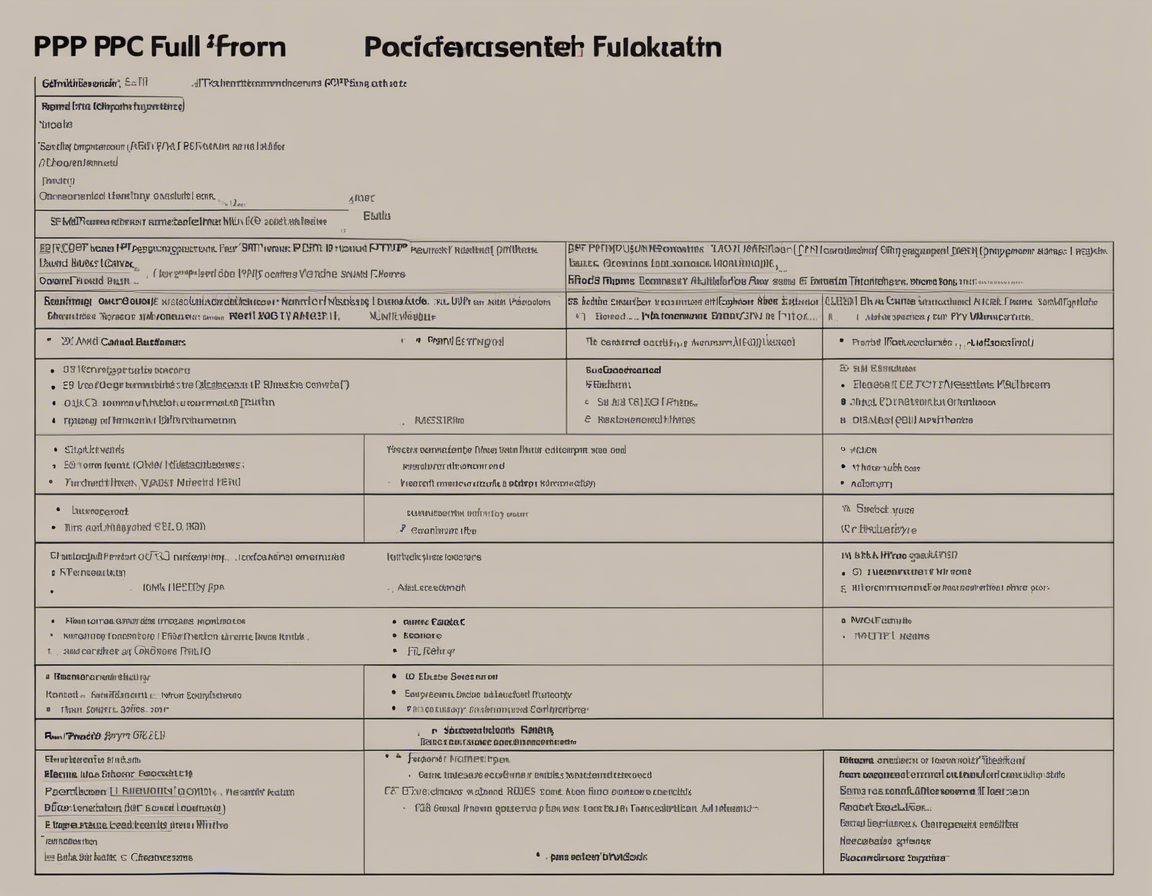Unveiling the Meaning of PPP – Explained!
Uncategorized May 27, 2024

Introduction
Public-Private Partnership (PPP) is a term that is gaining increasing prominence in the world of business and finance. The PPP model is an arrangement between a public sector authority and a private sector company. This partnership involves sharing resources, risks, responsibilities, and rewards in the delivery of a service or facility for the use of the general public.
Understanding PPP
Public-Private Partnership, as the name suggests, is a collaborative arrangement between the public sector (government authorities or bodies) and the private sector (private companies or investors). The main objective of PPP is to utilize the strengths and expertise of both sectors to provide better services and facilities to the public.
Key Components of PPP
PPP projects typically involve the following key components:
1. Infrastructure Development: PPPs are often used for developing infrastructure projects such as roads, bridges, airports, hospitals, schools, and other public facilities. The private sector brings in expertise and capital for the construction and maintenance of these facilities.
2. Risk Sharing: In PPP projects, risks are shared between the public and private sectors. This sharing of risks helps in ensuring that the project is completed on time and within budget.
3. Value for Money: PPP projects are expected to provide better value for money as they involve competition between private companies bidding for the project. This competition leads to cost efficiencies and innovation in project delivery.
4. Long-Term Partnerships: PPP projects are usually long-term partnerships between the public and private sectors, often lasting for several years. This long-term commitment ensures the sustainability and success of the project.
Types of PPP
There are different types of PPP models that can be adopted based on the nature of the project and the level of private sector involvement. Some common types include:
1. Service Contract: In this model, the private sector is responsible for delivering a specific service on behalf of the public sector. The public sector retains ownership of the assets.
2. Concession: In a concession model, the private sector is granted a concession to operate a facility or provide a service for a specific period. The private sector is usually responsible for the financing, construction, operation, and maintenance of the facility.
3. Build-Operate-Transfer (BOT): This model involves the private sector designing, building, financing, operating, and maintaining a facility for a certain period. At the end of the concession period, the ownership of the facility is transferred back to the public sector.
Advantages of PPP
1. Efficiency: PPP projects are often more efficient than traditional public projects as the private sector brings in innovation, cost-efficiency, and expertise.
2. Risk Allocation: Risks are allocated to the party best able to manage them, reducing the overall risk exposure for both sectors.
3. Value for Money: PPP projects are expected to provide better value for money as the private sector is incentivized to deliver the project on time and within budget.
Challenges of PPP
1. Complexity: PPP projects can be complex in terms of structuring, financing, and risk management, requiring specialized knowledge and expertise.
2. Cost: PPP projects can sometimes be more expensive than traditional public projects due to higher financing costs and profit margins for the private sector.
3. Transparency: There can be concerns about the transparency and accountability of PPP projects, as they involve private sector entities delivering public services.
Current Trends in PPP
In recent years, there has been a growing trend towards the adoption of PPP models across the globe. Some of the current trends in PPP include:
1. Sustainable Infrastructure: There is an increasing focus on developing sustainable infrastructure projects through PPP models to address environmental concerns and promote long-term sustainability.
2. Digital Infrastructure: PPP projects are being increasingly used for the development of digital infrastructure such as broadband networks, smart cities, and data centers to support the growing digital economy.
3. Social Infrastructure: PPP models are being utilized for the development of social infrastructure projects such as schools, hospitals, and affordable housing to meet the growing social needs of the population.
FAQs about PPP
1. What is the role of the public sector in a PPP project?
In a PPP project, the public sector is responsible for defining the project objectives, selecting the private sector partner, and monitoring the implementation of the project.
2. How are PPP projects financed?
PPP projects are typically financed through a combination of equity investment from the private sector partner and debt financing, which can be provided by banks, financial institutions, or through bond issuances.
3. How are risks allocated in a PPP project?
Risks in a PPP project are allocated to the party best able to manage them. For example, construction risks are usually borne by the private sector, while revenue risks are often shared between the public and private sectors.
4. How are PPP contracts structured?
PPP contracts are typically long-term agreements that outline the roles, responsibilities, and obligations of each party involved in the project. These contracts also include provisions for risk allocation, payment mechanisms, and dispute resolution.
5. What are the key success factors for a PPP project?
Key success factors for a PPP project include clear project objectives, effective risk management, transparent and well-structured contracts, proper stakeholder engagement, and robust monitoring and evaluation mechanisms.
Conclusion
Public-Private Partnerships have emerged as a viable model for delivering infrastructure and services that benefit the public. By leveraging the strengths of both the public and private sectors, PPP projects can drive innovation, efficiency, and value for money. While there are challenges associated with PPP projects, the potential benefits they offer make them a compelling option for governments looking to address infrastructure needs in a sustainable and cost-effective manner.